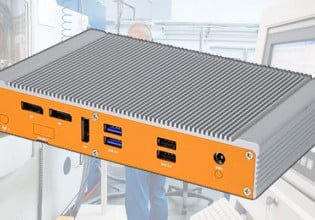New Proline Promass Q 300/500 for Accurate Hydrocarbon Measurement
Endress+Hauser announce the latest addition to their four-tube Coriolis flowmeters, the Proline Promass Q 300/500 meters for accurate transfer and measurement of liquids for even larger pipe sizes.
The Endress+Hauser Group has added three new flowmeters to their Promass Q lineup for larger pipe sizes. The new lineup, the Proline Promass Q 300/500, continues to utilize the four-tube technology that differentiates itself from standard two-tube flowmeters on the market.
The extra tubes ensure accurate measurement with increased flow over two-tube systems. With the latest additions for larger pipe sizes, Endress+Hauser aims to continue creating accurate petroleum measurement with less impedance to the flow of the petroleum through the pipeline.

A look at the new Proline Promass Q 300/500 lineup, Endress+Hauser's newest addition to the their Promass Q Coriolis flowmeters. Image used courtesy of Endress+Hauser
Proline Promass Q 300/500
Over 90 million barrels of oil change location every day worldwide. Whether the change in location is movement from storage, transportation, or the process of being bought or sold, accurate measurement is of great importance. Accurate measurement prevents either vendors or consumers from getting shorted in the transaction and helps to eliminate inaccuracies created every time the product changes hands.
The Promass Q flowmeters have been designed to help with the accurate transfer of liquids for industries that deal with large quantities of it, especially the petroleum gas industry. With four tubes instead of two, Endress+Hauser's Proline Promass Q flowmeters are able to produce a 25% increase in flow rate when compared to other meters on the market.
In addition to a greater flow rate, the meters also creates a smaller amount of pressure loss in the pipe downstream of the sensor. The sensors can be used to measure liquids, with temperatures up to 205 °C (401 °F), or down to –196 °C (–321 °F). They also include the best turndown and zero point stability in the industry, with density measuring accuracy (tested by H&D Fitzgerald/UK): ±0.2 kg/m³ (±0.0002 g/cm³).

Endress+Hauser's Proline Promass Q 300/500 for larger pipe sizes. Images used courtesy of Endress+Hauser
All Promass Q sensors are stainless steel and IP66/67 rated to ensure dependable service in harsh environments, including the saline environment commonly found in shipping ports. The devices also contains multi-frequency technology to increase measuring performance with liquids that include bubbles.
The Promass Q 300/500 flowmeters are the newest addition to Endress+Hauser's Proline Promass Q Coriolis flowmeters. The new lineup is capable of measuring pipelines up to DN 250 (10"), useful for different applications that require accurate measurement for larger pipe sizes. The Promass Q 300/500 includes measuring accuracy (±0.05% o.r.) and exceptional repeatability (±0.025%) over the entire measuring range.

Using the Coriolis priniciple, the Proline Promass Q flowmeters are able to accuretely the flow of petroleum through a pipeline. Image used courtesy of Endress+Hauser
What is a Coriolis Flowmeter?
The Promass Q meters works on the Coriolis principle, a force that acts upon objects in motion and is the principal driving force behind the spinning motion of hurricanes and other large low pressure systems. Endress+Hauser has managed to take advantage of this force in order to accurately measure the flow of a liquid through a pipe. The system consists of a tube located inside of the sensor and an exciter is placed next to the tube which causes it to oscillate constantly. If there is no flow, the measuring tube oscillates in a uniform manner.
There are two sensors placed on either side of the exciter. These sensors can tell any discrepancies in the uniformity of the flow of the liquid in the tube. When flow begins, twisting is added to the tube’s oscillation because of the inertia within the liquid. Because of the inertia of the liquid, the Coriolis effect is induced and the tube oscillates in different directions at the same time. The sensors can pick up on the difference in oscillation in terms of time and space.
The discrepancy in oscillation is known as a phase shift and can be used to directly measure the amount of liquid flowing through the tube. The more liquid that flows through the tube, the higher the velocity of the liquid in the tube, and in turn the more the oscillation present in the tube. It is also possible to measure the density of the fluid by measuring the frequency of the tube’s oscillation in one second—denser fluids oscillate slower than less dense ones. The sensor may even be used to measure the viscosity and temperature of the liquid inside of it.






